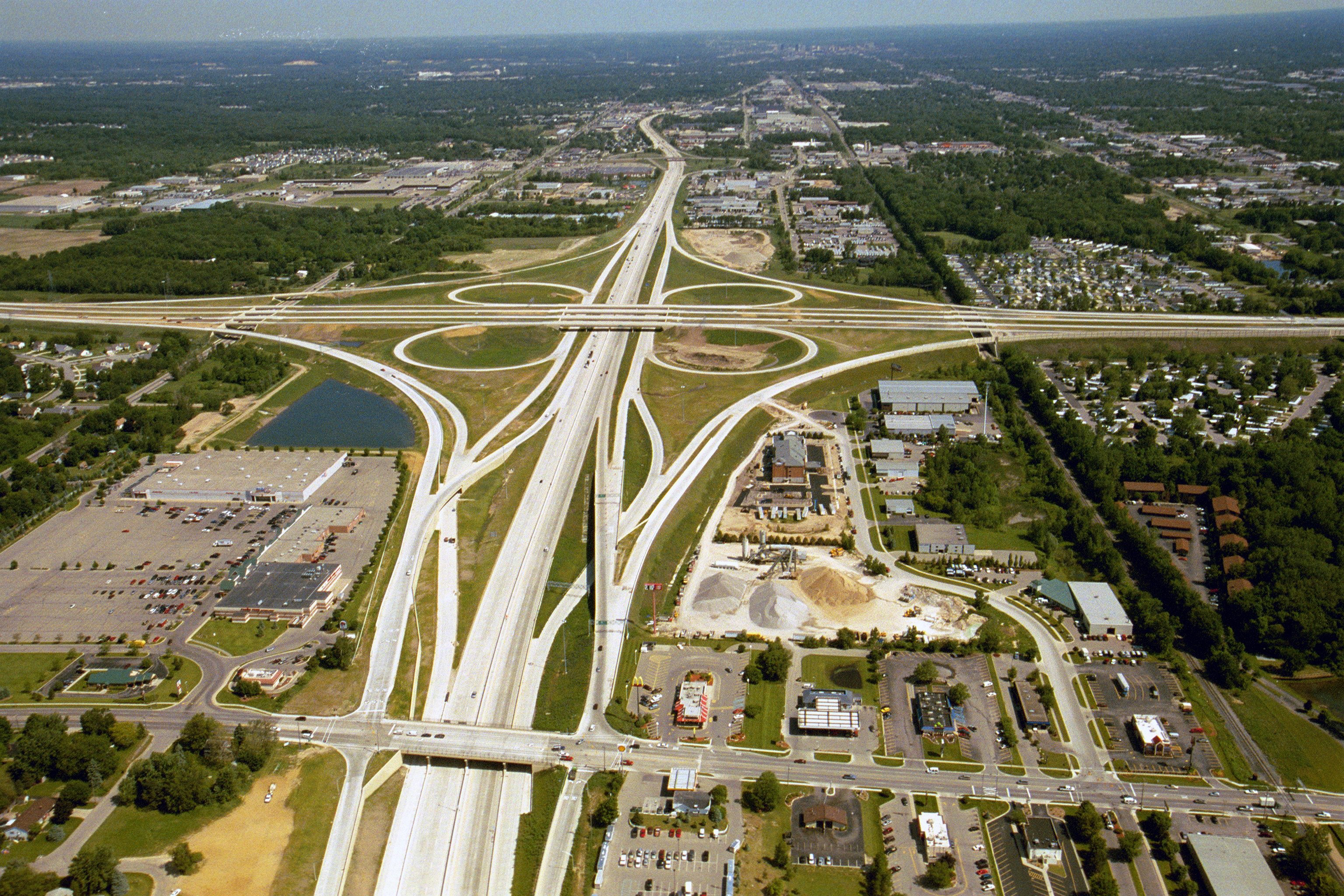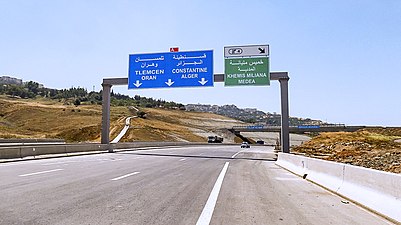
Controlled-access highway
A controlled-access highway is a type of highway that has been designed for high-speed vehicular traffic, with all traffic flow—ingress and egress—regulated. Common English terms are freeway,[a] motorway,[b] and expressway.[c] Other similar terms include throughway or thruway[d] and parkway. Some of these may be limited-access highways, although this term can also refer to a class of highways with somewhat less isolation from other traffic.
"Control of access", "Freeway", and "Motorway" redirect here. For the security concept, see Access management. For the 2012 Chinese film, see Motorway (film). For other uses, see Freeway (disambiguation) and Motorway (disambiguation).
In countries following the Vienna convention, the motorway qualification implies that walking and parking are forbidden.
A fully controlled-access highway provides an unhindered flow of traffic, with no traffic signals, intersections or property access. They are free of any at-grade crossings with other roads, railways, or pedestrian paths, which are instead carried by overpasses and underpasses. Entrances and exits to the highway are provided at interchanges by slip roads (ramps), which allow for speed changes between the highway and arterials and collector roads. On the controlled-access highway, opposing directions of travel are generally separated by a median strip or central reservation containing a traffic barrier or grass. Elimination of conflicts with other directions of traffic dramatically improves safety,[2] while increasing traffic capacity and speed.
Controlled-access highways evolved during the first half of the 20th century. Italy was the first country in the world to build controlled-access highways reserved for fast traffic and for motor vehicles only.[3][4] Italy opened its first autostrada in 1924, A8, connecting Milan to Varese. Germany began to build its first controlled-access autobahn without speed limits (30 kilometres [19 mi] on what is now A555, then referred to as a dual highway) in 1932 between Cologne and Bonn. It then rapidly constructed the first[5] nationwide system of such roads. The first North American freeways (known as parkways) opened in the New York City area in the 1920s. Britain, heavily influenced by the railways, did not build its first motorway, the Preston By-pass (M6), until 1958.
Most technologically advanced nations feature an extensive network of freeways or motorways to provide high-capacity urban travel, or high-speed rural travel, or both. Many have a national-level or even international-level (e.g. European E route) system of route numbering.








